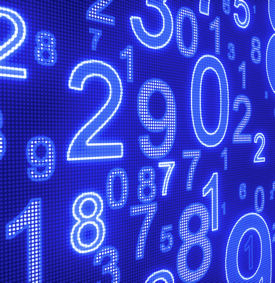E-prescribing incentives change to penalties on June 30
What had been incentives until now to electronically prescribe drugs will become penalties very soon. ACP's practice management staff outline what physicians must do today to avoid a 1.5% penalty on all Medicare allowed charges.
The 2011 e-prescribing program includes for the first time a payment-adjustment or penalty component. Eligible professionals who do not implement and use an e-prescribing system in 2011 will be in jeopardy of penalties in 2012 and 2013. Practices have only until June 30, 2011 to avoid the 2012 penalty.
Since 2009, CMS has been offering an incentive for eligible professionals to implement and use electronic prescribing to improve the quality, efficiency and safety of health care delivered to beneficiaries. This initiative will continue in 2011, with successful e-prescribers earning a bonus of 1% of their total allowed charges for professional services covered by the Medicare Part B Physician Fee Schedule.

A full description of the 2011 e-prescribing incentive program, including the full set of qualified service codes, the definition of a qualified e-prescribing system and related penalties, is available at ACP's practice management center.
The following series of frequently asked questions focuses on the new penalty component and includes suggestions on how to avoid it.
Q: What payment adjustments or penalties in the 2011 e-prescribing incentive program affect payments in 2012 and 2013?
A: A penalty has been introduced for 2011 that will affect Medicare payments in 2012 and 2013. Eligible professionals will be penalized if they do not report a minimum of 10 e-prescribing reporting events during the six-month period of Jan. 1 to June 30, 2011. A penalty of 1% will be assessed for all allowed charges for professional services covered by the Medicare Part B Physician Fee Schedule during 2012. The payment cut is estimated to be from $2,000 to $3,000 for the typical internal medicine practice. In addition, practices that do not report a minimum of at least 25 e-prescribing reporting events between Jan. 1 and Dec. 31, 2011 will be assessed a 1.5% penalty for all Medicare allowed charges submitted in 2013.
Q: What is an e-prescribing reporting event?
A: An e-prescribing event consists of an eligible professional generating at least one e-prescription using a qualified system during a patient visit. Regardless of how many e-prescriptions you generate during the visit, it will only count as one e-prescribing event. The visit must also be for one of a defined set of services. The defined services are typical of internal medicine practices and include all outpatient evaluation and management office visits. In practice, eligible professionals should assess whether a particular e-prescribing system is qualified by asking the system's vendor and obtaining assurance that the system is capable of performing all of the required functions.
Q: How do physicians indicate that they have had an e-prescribing reporting event?
A: Eligible professionals must submit the G code G8553 [See CPII Tips for an easy-to-follow guide on how to comply with e-prescribing rules.], which reflects that at least one prescription created during the encounter was generated and transmitted using a qualified e-prescribing system. As a result of data processing limitations at CMS, all documentation (G-code submissions) pertaining to avoiding the penalty in 2012 and 2013 must be submitted through claims. This is in contrast to submissions related to the e-prescribing bonus, which can be submitted through claims, registries or electronic health records (EHRs).
This means that a practice must submit the required G code through claims at least 10 times between Jan. 1 and June 30, 2011 to avoid accruing the penalty in 2012. To avoid the penalty for 2013, the eligible professionals must submit the required G code at least 25 times throughout 2011.
Q: Are there hardship exemptions to avoid the penalty?
A: Yes. Eligible professionals can be considered for a significant hardship exemption from the penalty if during Jan. 1 through June 30, one of the following circumstances applies:
- The eligible professional practices in a rural area with limited high-speed Internet access (G8642).
- The eligible professional practices in an area with limited available pharmacies for electronic prescribing (G8643).
The eligible professional must submit one of the related G codes indicated above during the first six months of 2011 to be considered for this hardship exemption. The eligible professionals will also be excluded from the penalty if the practice does not have at least 100 cases (that is, claims for patient services) that contain the designated e-prescribing service code for dates of service between Jan. 1 through June 30, or if the eligible professionals' claims reflect that less than 10% of their estimated total allowed charges for the Jan. 1 through June 30 reporting period are composed of designated e-prescribing service codes.
Q: How does participation in the EHR meaningful use incentive program relate to the e-prescribing incentive and penalty?
A: Participants in the Medicare EHR meaningful use incentive program will not be eligible for the e-prescribing bonus. But they will still have to submit the relevant G-code documentation through claims indicating at least 10 e-prescribing events to avoid the e-prescribing penalty for 2012. Participants in the Medicaid meaningful use program are eligible for the e-prescribing bonus, as well as the e-prescribing penalty.
Q: How can I participate in the e-prescribing incentive program and avoid the e-prescribing penalty when my practice currently does not have any e-prescribing capabilities?
A: Optimally, the College recommends that practices implement an EHR system, which includes qualified e-prescribing functionalities. This would allow the practice to both potentially qualify for the incentives available under the Medicare or Medicaid meaningful use programs (i.e., $44,000 and $63,750, respectively), as well as avoid the penalty under the e-prescribing program.
Unfortunately, unless a practice is well along in this process, it is unlikely it can be concluded before June 30. A more timely option is to implement a free standing e-prescribing system that meets the CMS e-prescribing qualifications. Many of these systems are available and costs generally range from free to less than $50 a month. For example, the National ePrescribing Patient Safety Initiative offers a free, basic e-prescribing system that meets the CMS e-prescribing qualifications for all interested physicians and medication prescribers. The following two websites provide e-prescribing system search tools to help in the e-prescribing system selection process: Surescripts Prescriber Software Search Tool and the American Medical Association's “Find a System “ tool. Once you have determined two to three systems you are interested in, you will have to contact the system vendor to verify that its system is qualified under the CMS e-prescribing program.
In summary, no matter whether you are planning to participate in the EHR meaningful use or e-prescribing bonus programs, you are at risk of losing $2,000 to $3,000 in 2012 and more in 2013 if you do not implement a qualified e-prescribing system and submit the required G code the minimum number of times through claims during 2011.
The College further recommends that you submit through claims at least 25 e-prescribing events during the first six months of 2011. This assures you of earning the 1% e-prescribing bonus for 2011, and avoiding the e-prescribing penalties for 2012 and 2013.
The ACP e-Prescribing website contains many helpful informational tools.
You can also e-mail specific e-prescribing questions.




